When you have a home you are proud to own in Northern Virginia, it’s usually surrounded by some well-maintained landscaping and a lush, green lawn.
What isn’t as curb appeal-worthy is a strangely colored lawn – one that’s brown or yellow or multi-colored.
You want to feel positive when pulling into your driveway each day or want to enjoy the outdoors in a lawn you’re proud of. It’s not too much to ask for. A lawn is a part of having a happy home.
What can be frustrating is ugly areas, blemishes, rough patches, or discoloration. No one wants those. And once you see one, they just seem to multiply.
In fact, one thing you might see in your lawn is spots that look rusty. Not a great look for your lawn.
If you’re seeing this, try not to worry. We can give you more insight into this grass rust and help you get rid of it so you can get your green lawn back again.
What Causes Lawn Diseases In Northern Virginia Grasses?
First, let’s talk about lawn diseases.
All Northern Virginia lawns have disease. It may sound crazy, but it’s true.
But even though disease is present, it may not be visible. This is because lawn diseases only appear when a lawn is stressed. Just like how high anxiety might give you a headache, a stressed-out lawn can bring about disease.
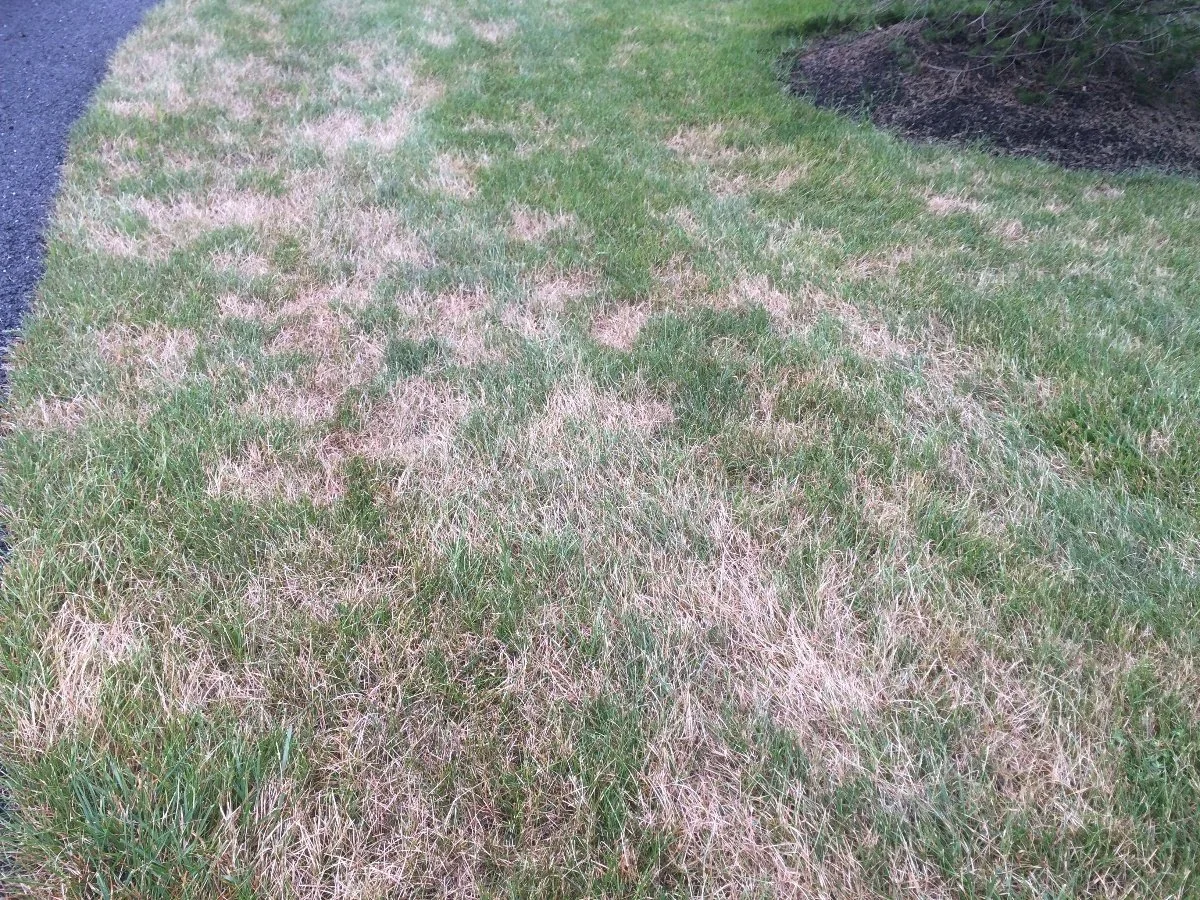
What makes your lawn stressed?
Mowing improperly can do it. The correct height to mow your Northern Virginia lawn to is 3.5 to 4 inches. During the growing season, that typically means mowing weekly to ensure you remove no more than one-third of the grass blade at any one time. To mow well, use sharp mower blades so you don’t tear your grass.
Proper watering is also important. Watering too much during evening hours means your grass can’t dry out before night, which encourages disease-causing conditions. Persistent, wet, humid air definitely doesn’t help.
Correct lawn fertilization is another practice that can keep your lawn happy. A soil test can help tell you what your lawn is lacking, and fertilizing based on these results means you won’t under- or over-fertilize. Nutrient deficiencies can certainly stress your lawn, so this step is important.
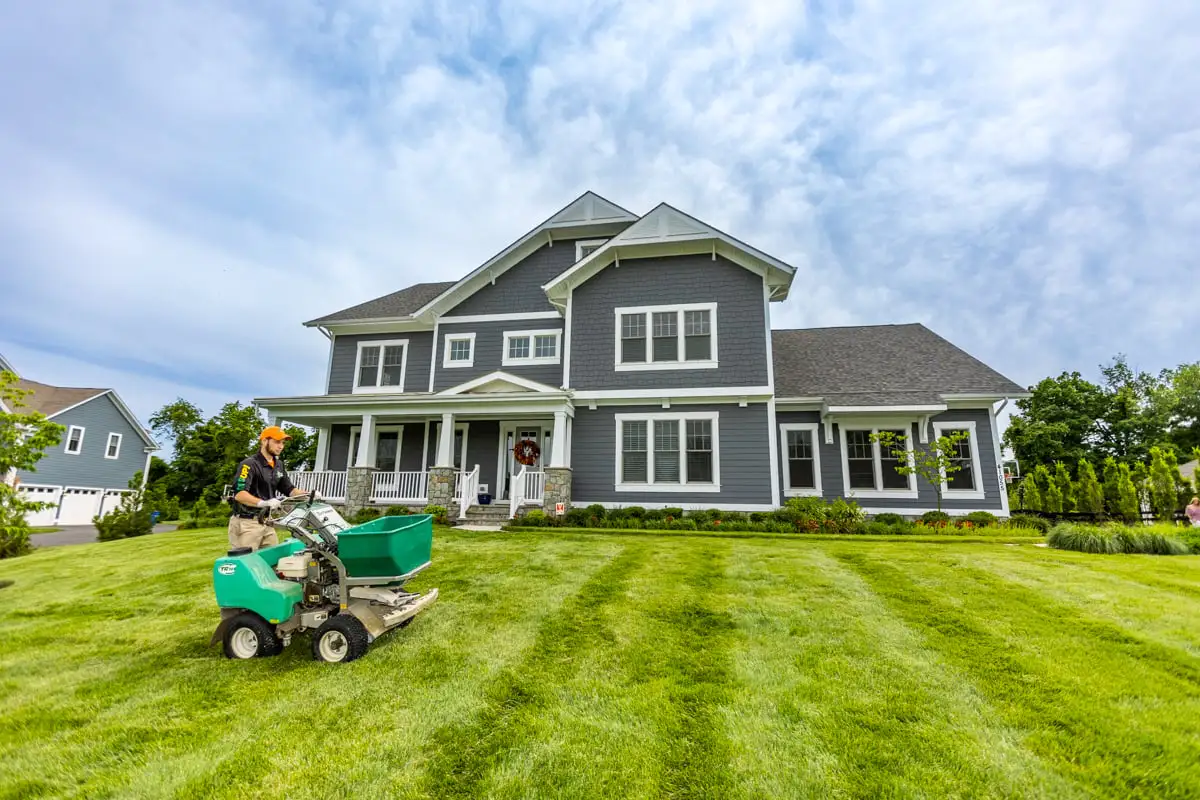
And, in fall, aerating your lawn, followed by overseeding and topdressing, can help ensure compaction doesn’t build up and your lawn continues to thicken in healthy soil and look its best.
These cultural practices are part of how to treat lawn rust disease, as well as other lawn diseases. Starting here can be a good place for disease prevention.
Rust Fungus on Grass 101
You might think of rust on something like your vehicle. This type of rust is the result of a chemical reaction. But grass rust is brought on by a common lawn fungus.
The reason this lawn disease is called rust is because of the yellow-orange, rusty appearance it gives the grass blades.
What Does Grass Rust Look Like?
When you first spot rust fungus on grass, you might see small yellowish-orange spots on individual grass blades. They will continue to grow as the disease develops and eventually rupture the surface of the grass blade and release a rusty powder that sticks to anything it passes.
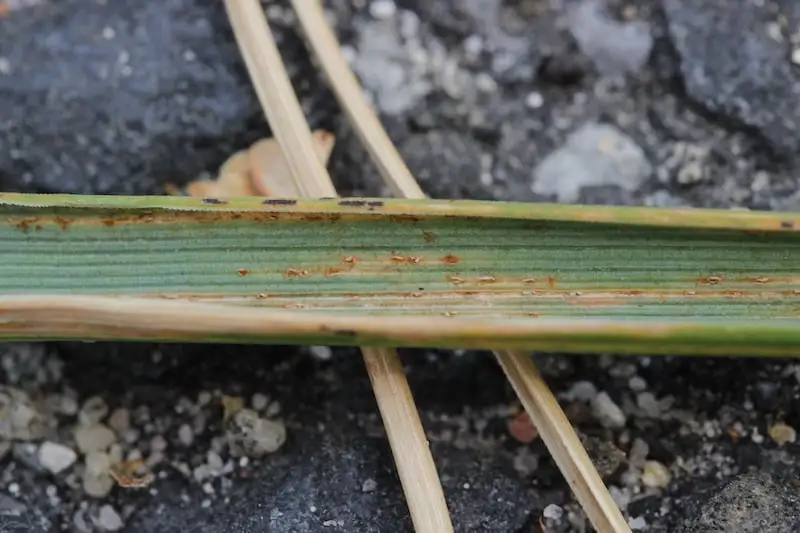
In fact, if you walk along your lawn in these areas or run your mower through the lawn, you might notice these yellow-ish orange spores on your shoes or mower.
Lawn Rust Disease Causes
You will most likely spot rust fungus on grass during mild, wet weather, starting in spring. It can continue through fall when you have sunny, drier periods followed by mild, humid periods.
Rust likes moderate temperatures – anywhere from 50 to 60 degrees Fahrenheit, as well as long evenings of dew or moisture in excess of 10 hours.
Where Can You Find Grass Rust?
A stressed-out lawn is more susceptible to grass rust than a healthy lawn.
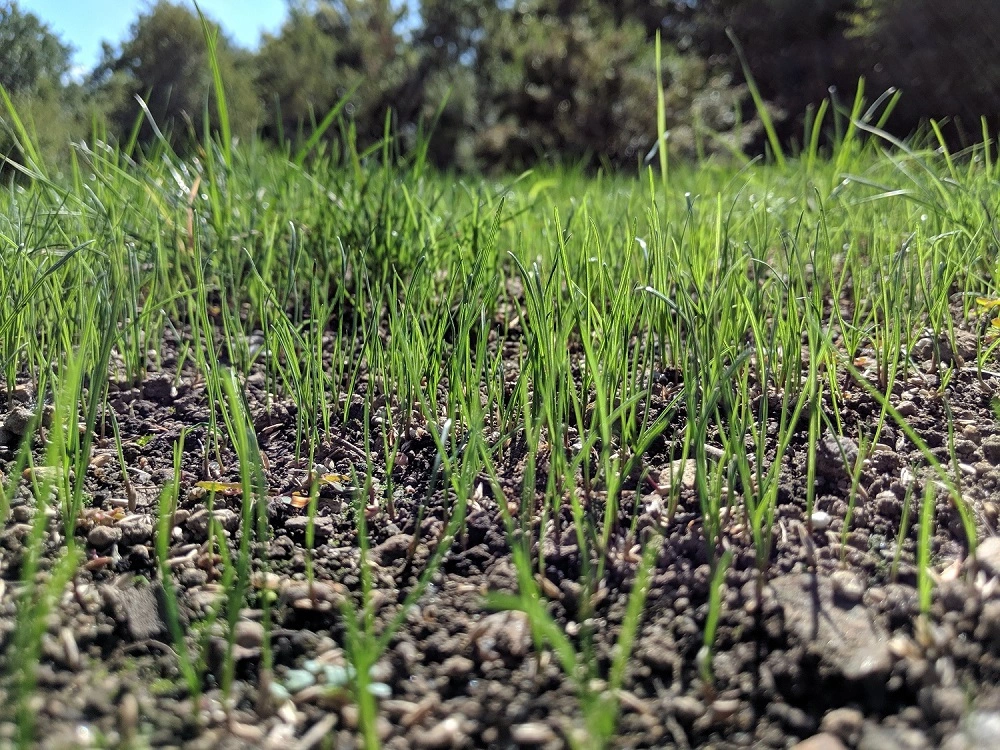
Pay specific attention to areas of your lawn that are compacted, freshly seeded, or shaded, too. Rust likes to take advantage of these spots.
Lawn Rust Disease Treatment
No one wants a discolored or unhappy lawn that is patchy and full of colors that aren’t green.
Knowing the right lawn rust disease treatment can mean getting that lush, thick lawn you love again.
Here is what you can do to treat lawn rust disease.
How to Treat Lawn Rust Disease
When it comes to preventing grass rust, you have to make sure you have nice, thick, healthy grass.
To do this, it’s extremely important to follow the lawn care practices we detailed above. This includes precise fertilization based on soil test results; correct mowing; proper watering; and annual aeration, overseeding, and topdressing.
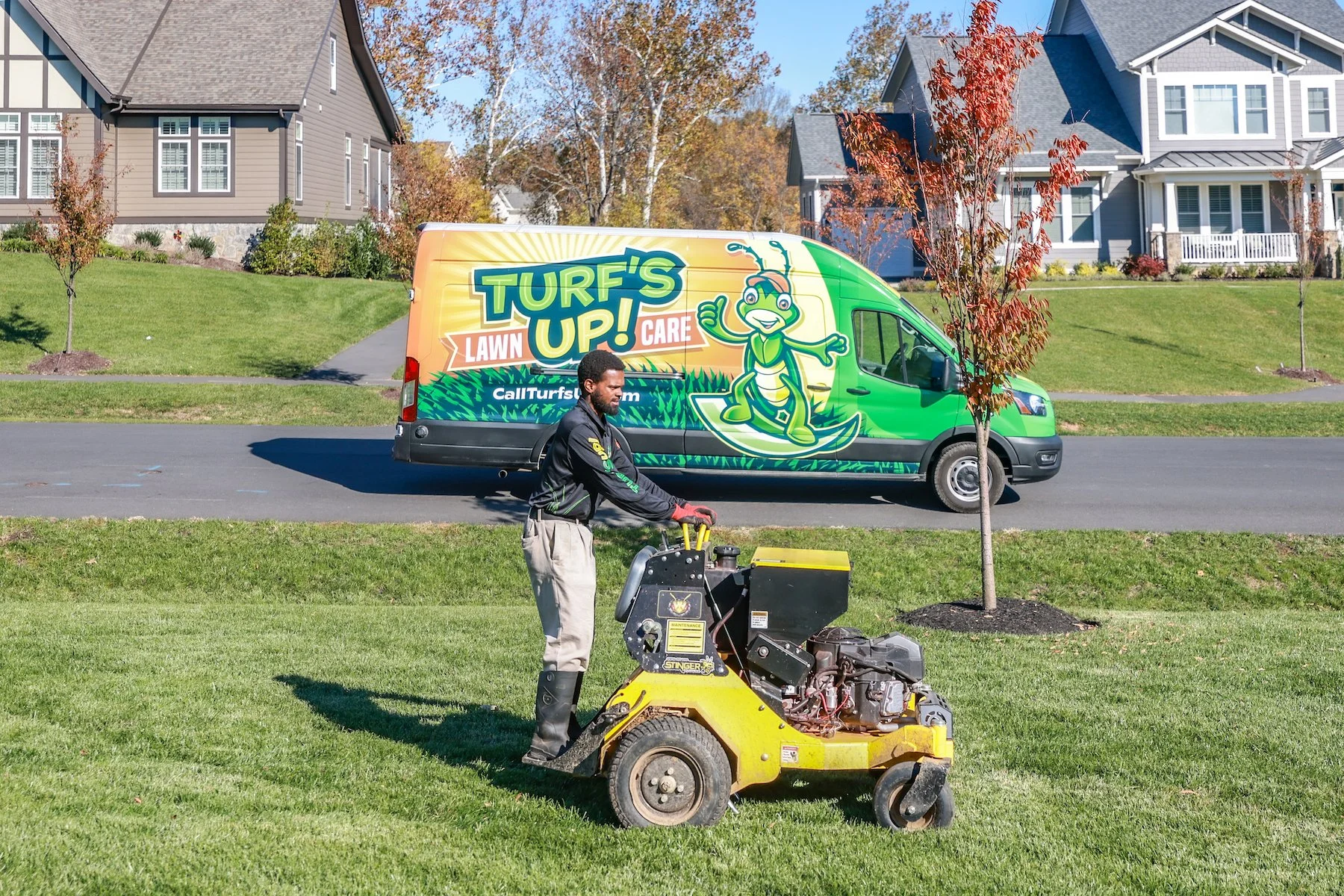
A lawn boosted by this proper care can fight off diseases, as well as pests.
You can also trim tree branches a bit in some areas of your lawn to minimize excess shade to help get rid of rust or prevent it from reappearing.
A healthy lawn is truly your best defense against rust. You especially want to focus on a balanced fertilization program.
You Can Have a Lawn Without Disease Issues in Northern Virginia
With rust fungus on grass in Northern Virginia, the more crucial point you want to remember is that maintaining adequate nutrition levels in your lawn can lessen the disease impact and even help your lawn recover faster if this nasty lawn disease does appear.
If conditions are present for grass rust lawn disease to take over your lawn, fertilization can help your lawn grow out the infected areas. As weather conditions improve, the disease will continue to disappear as your lawn gets stronger and stress is minimized while you practice proper cultural and care practices.
Taking good care of your lawn can always help with rust fungus on grass.
If you’re still worried about weird spots you’re seeing in your lawn or strange orange dots on grass blades or a weird rusty or yellow-orange powdery substance showing up on your shoes as you walk across your lawn, give Turf’s Up’s experienced lawn care professionals a call. We have the knowledge about how Northern Virginia lawn diseases work and can help you quickly identify the disease or lawn problem, treat it, recommend a recovery protocol, and help you get your green lawn back on its feet.
Ready to learn why Turf’s Up could be your totally awesome choice for lawn care disease control services in Northern Virginia? We’re stoked to learn more about you and help you have the best lawn on the block. Get started today with a free quote. Together, we can prepare a customized plan that is perfect for you and your lawn.
Image Source: Rust fungus
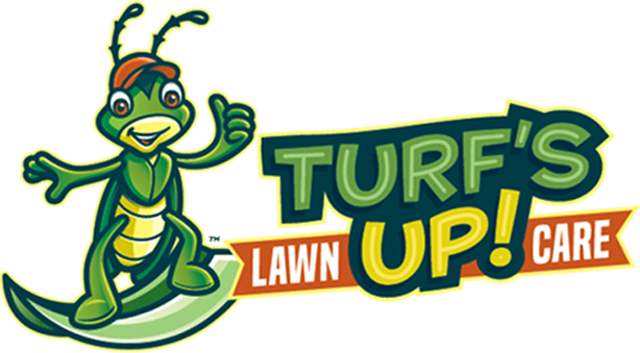
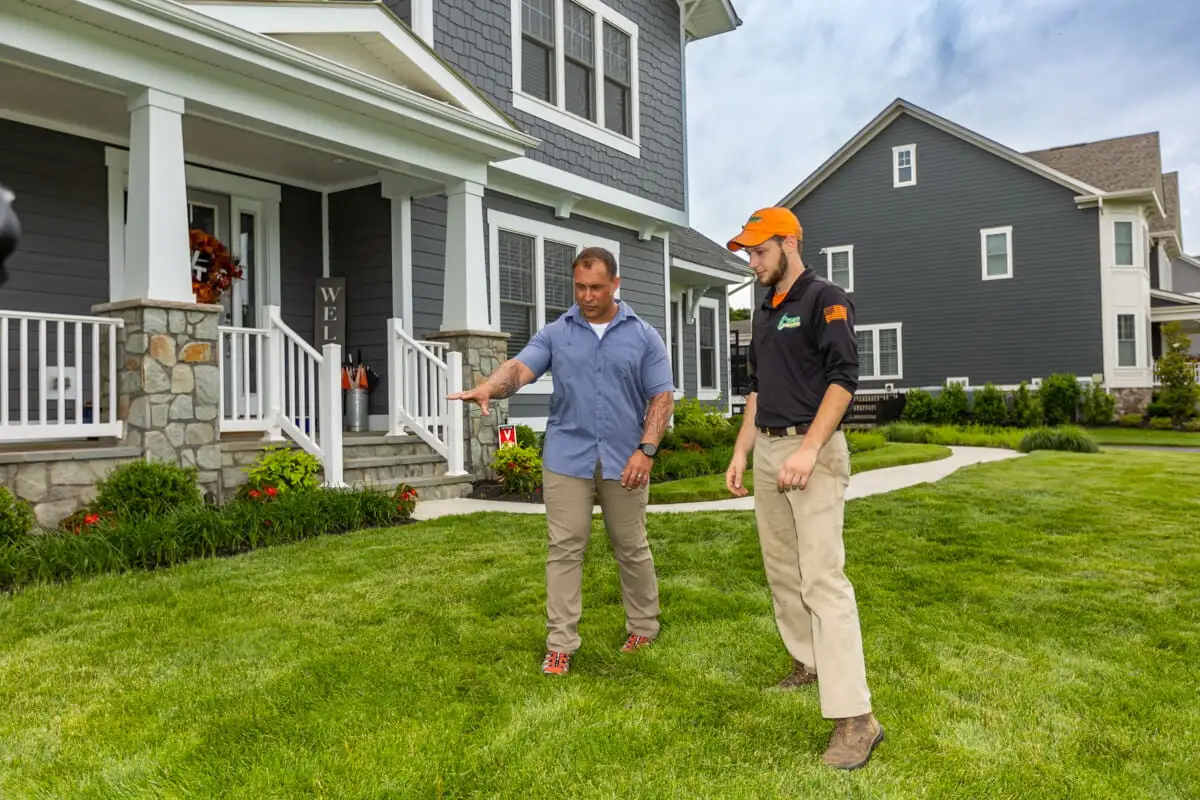





Comments (0)
Thanks for your comment!
Thanks for your feedback! Your comments have been successfully submitted! Please note, all comments require admin approval prior to display.
Error submitting comment!
There is a problem with your comment, please see below and try again.